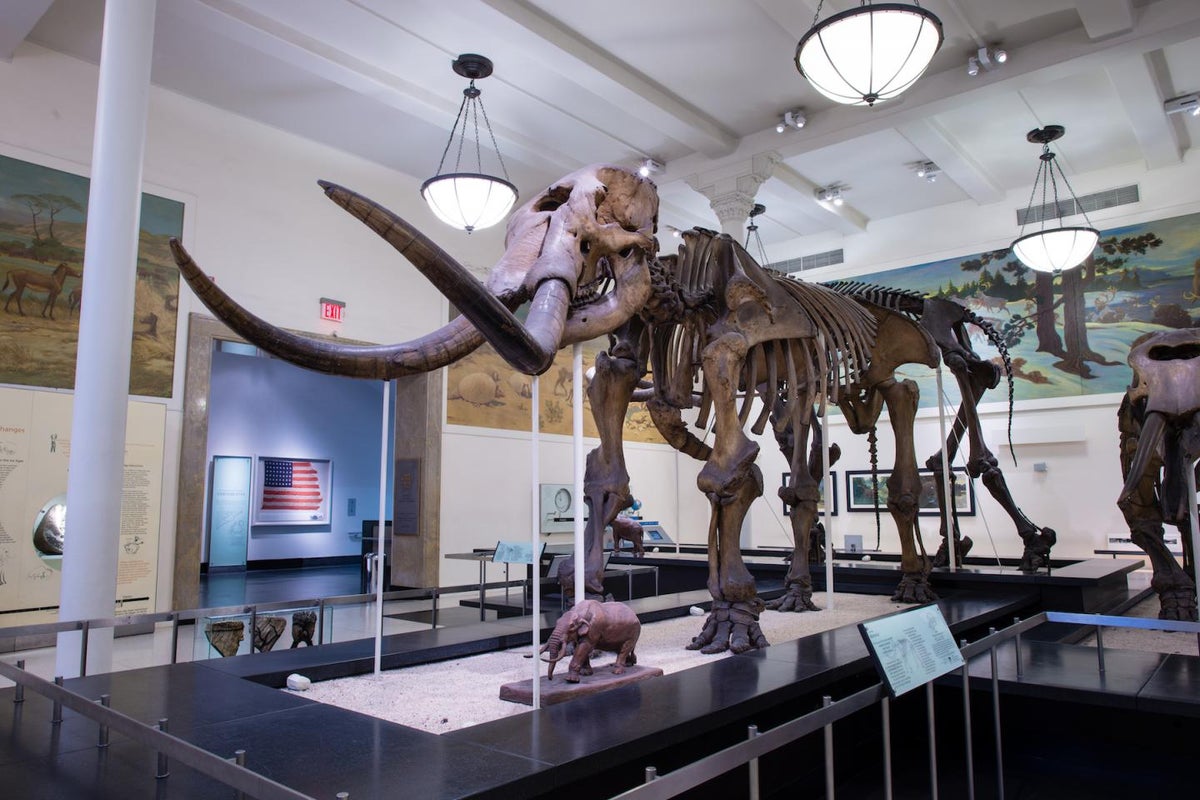
The life history of a now-extinct ancestor of the modern-day elephant has been reconstructed by scientists using only its tusk.
Scientists have for the first time documented the annual migration of the mastodon, apart from finding key insights about its travels as an adolescent and a reproductively active adult.
Researchers, including those from the University of Michigan in the US, conducted a chemical analysis of a fossil tusk recovered from an eight-ton adult mastodon whose remains were recovered from a peat farm near Fort Wayne in 1998.
The study, published on Monday in the journal PNAS, revealed that the mastodon died about 13,200 years ago in a “bloody” mating-season battle with a rival in what is currently northeast Indiana, about 100 miles from his home territory.
“You’ve got a whole life spread out before you in that tusk,” said study co-leader Daniel Fisher from the University of Michigan in the US.
Scientists suspect this particular mastodon bull made an annual trek during the last three years of his life from its cold-season home to the northeast Indiana region that was likely its preferred summer mating ground.
“The result that is unique to this study is that for the first time, we’ve been able to document the annual overland migration of an individual from an extinct species,” said paleontologist Joshua Miller, the study’s first author from the University of Cincinnati in the US.
“Using new modeling techniques and a powerful geochemical toolkit, we’ve been able to show that large male mastodons like Buesching [as the mastodon is called] migrated every year to the mating grounds,” Dr Miller said in a statement.
In the research, scientists cut a thin, lengthwise slab from the centre of the animal’s banana-shaped 6.2m (9.5ft) right tusk.
By conducting an advanced chemical analysis of the tusk section, they could reconstruct the life history of the mastodon and understand the changing patterns of the giant mammal’s landscape use during its adolescence and the final years of adulthood.
Researchers said the mastodon died in a battle for access to mates at age 34.
The findings suggest the original home range of the mastodon bull was likely in central Indiana and, like modern-day elephants, it stayed close to home until it separated from a female-led herd as an adolescent.
As an adult, the bull traveled farther and more frequently, often covering nearly 20 miles per month, researchers said.
Chemical analysis of the bull’s tusk suggests his landscape use varied with the seasons, including a “dramatic northward expansion into a summer-only region” that included parts of northeastern Indiana, which scientists suggested could be his mating grounds.
“Every time you get to the warm season, the Buesching mastodon was going to the same place – bam, bam, bam – repeatedly. The clarity of that signal was unexpected and really exciting,” said Dr Miller, who has used similar techniques to study the migration of caribou in Alaska and Canada.
Mastodons, like their mammoth and elephant cousins, have elongated upper incisor teeth that emerge from their skulls as tusks, and in each year of the animal’s life, new layers grow onto those already present, laid down in alternating light and dark bands.
Similar to growth layers in the annual rings of trees, scientists said that as mastodon tusks grew, the chemical elements in the mammal’s food and drinking water were incorporated into the tissues.
By analysing chemical signatures in the tusk growth layers, researchers could reconstruct the mastodon’s travels as an adolescent and as a reproductively active adult.
They collected 36 samples from the animal’s adolescent years and 30 samples from its final years.
Scientists found evidence of “pronounced seasonal fluctuations” in their analysis, which helped them determine the time of year a specific tusk layer formed.
In further studies, researchers hope to analyse the tusks of a different individual, either another male or a female.







